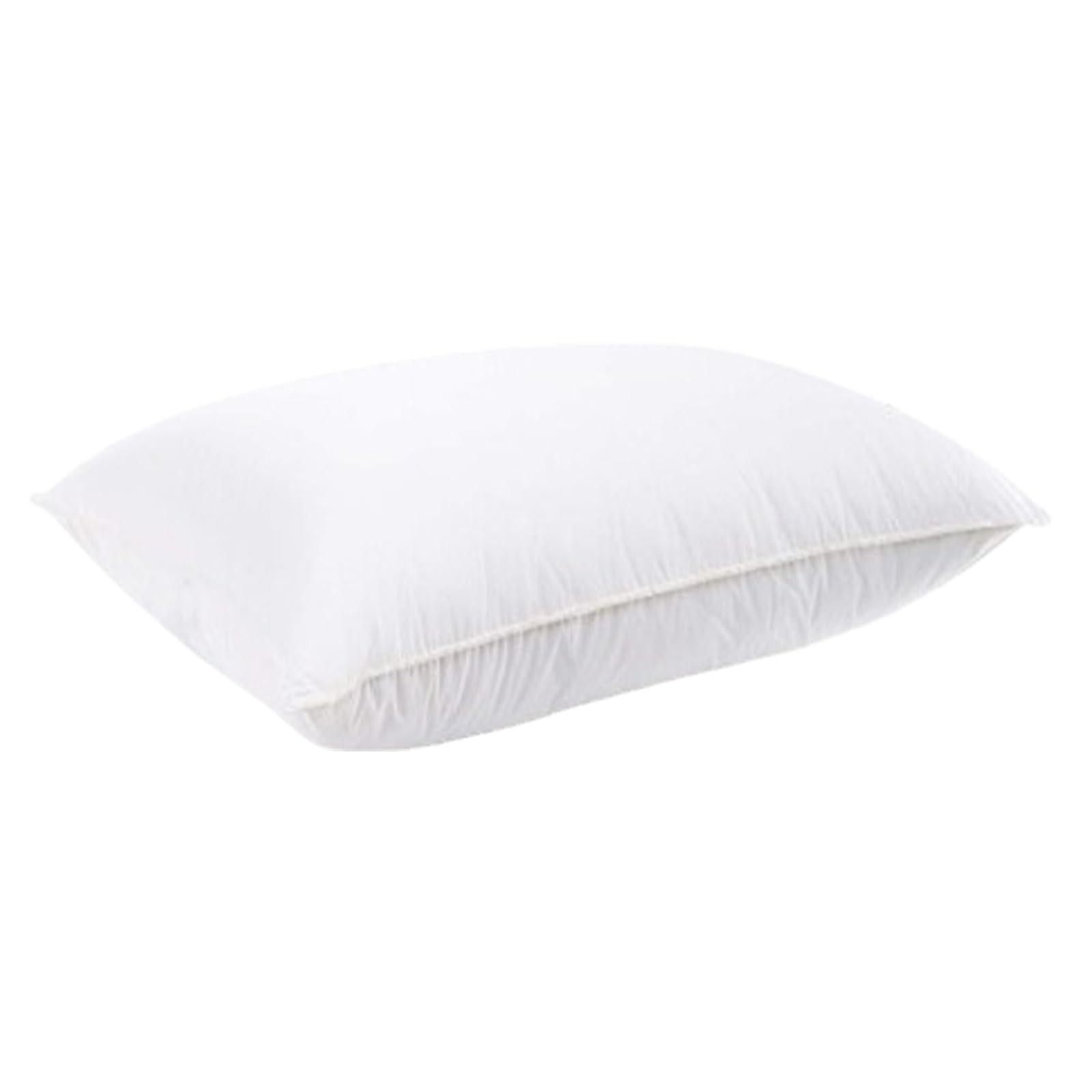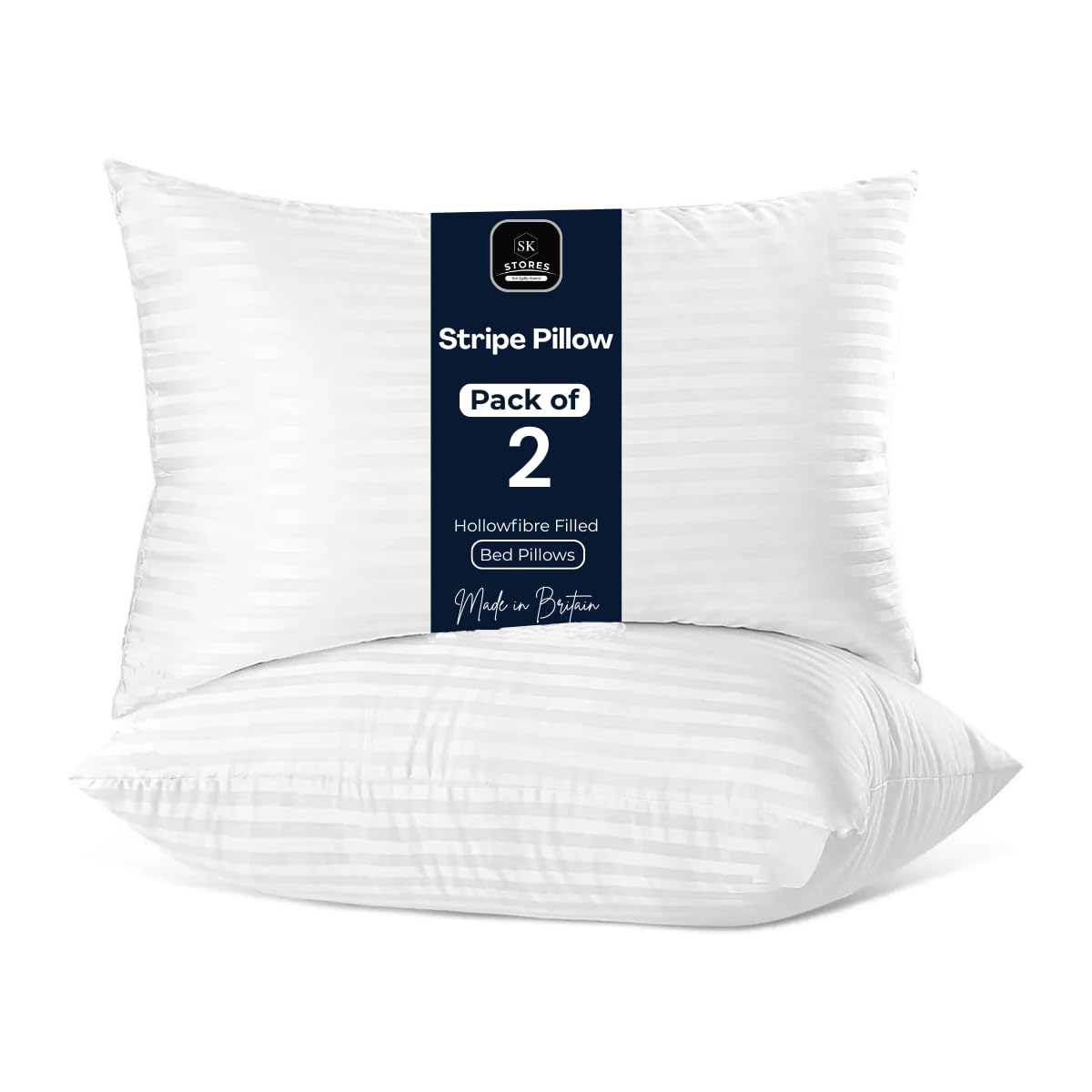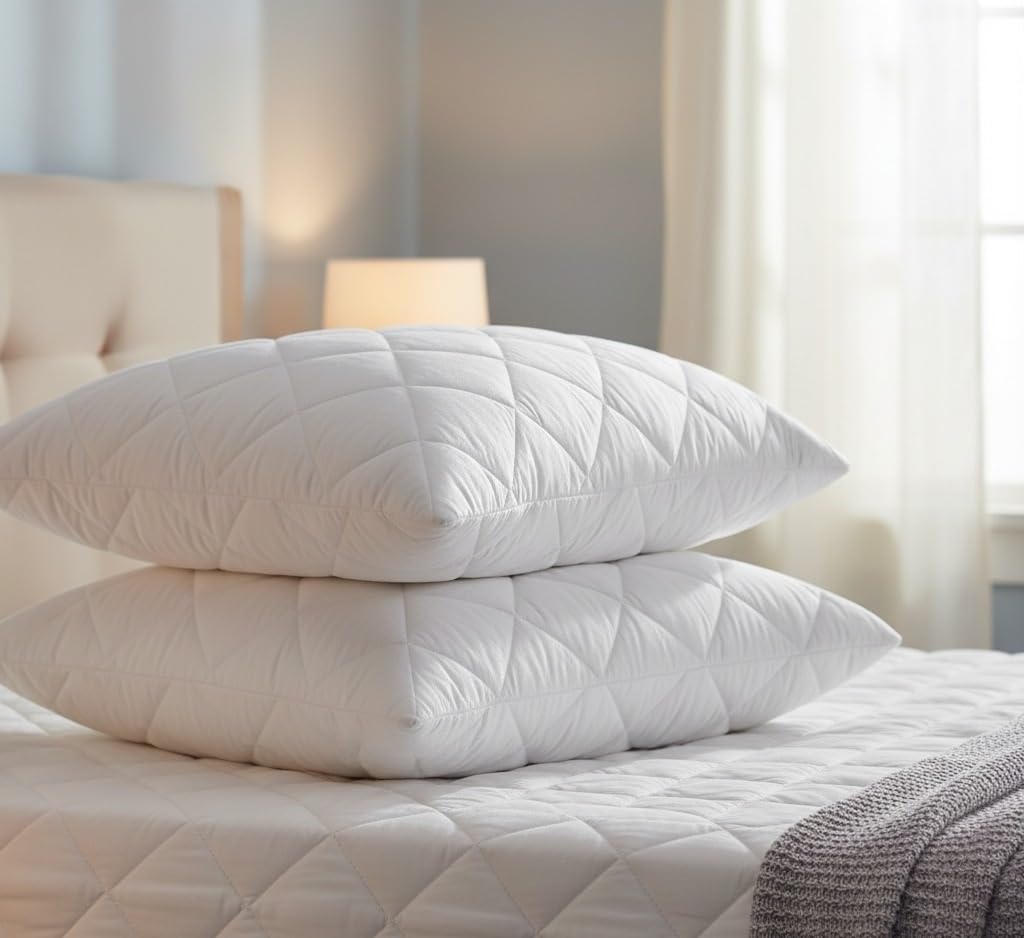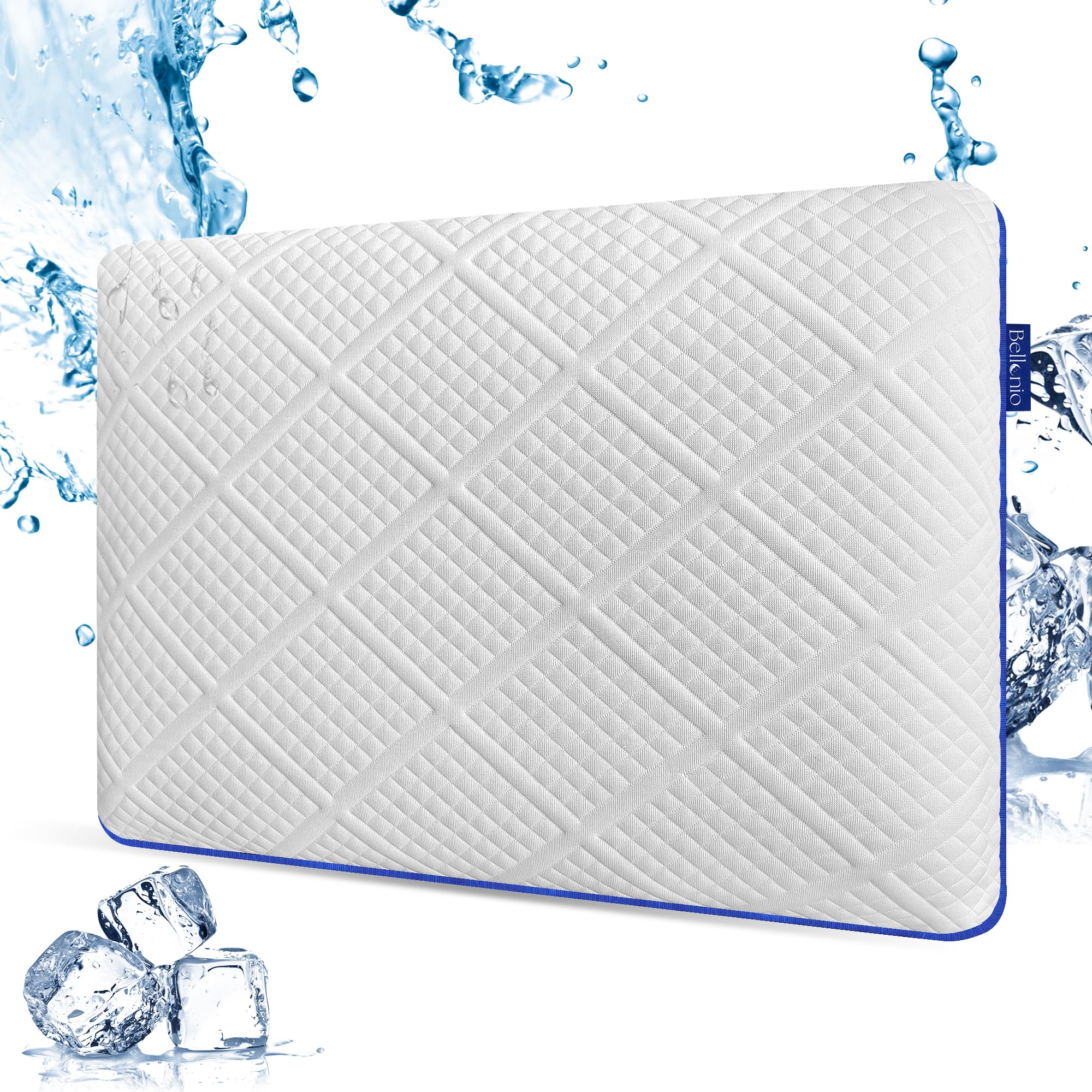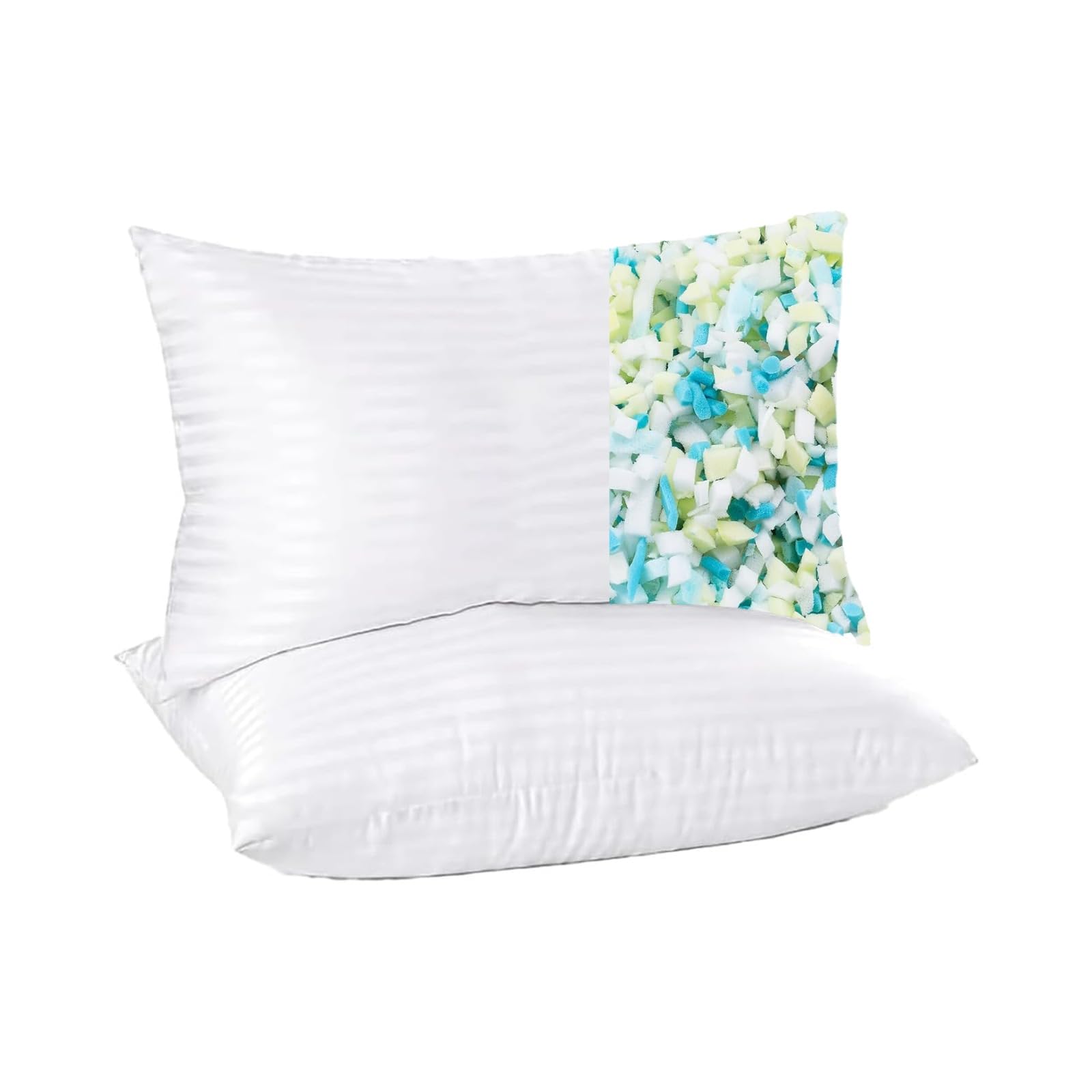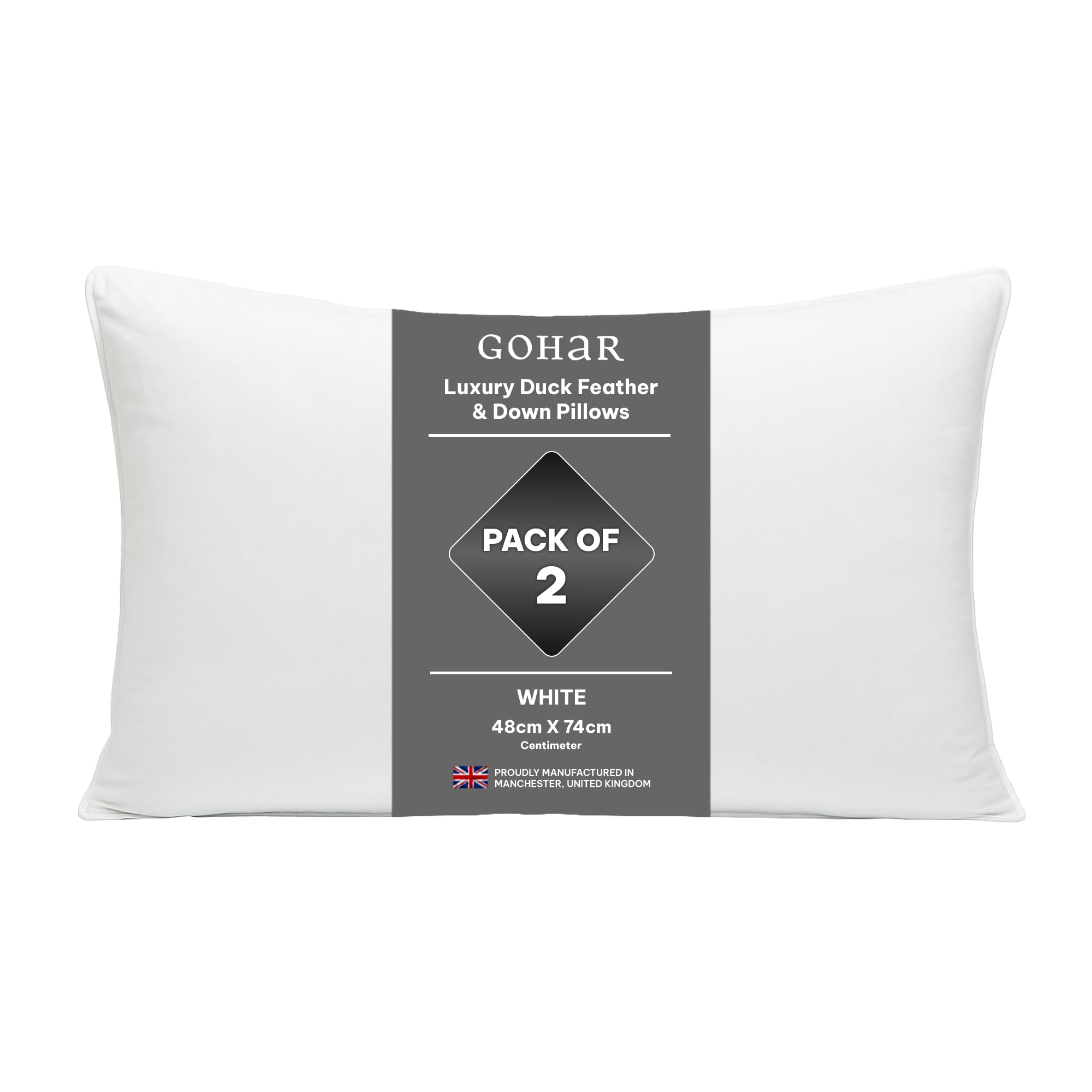Clean pillows support better sleep and last longer, but the right washing method depends on what is inside the pillow. Washing down like memory foam risks clumps and slow drying. Washing memory foam like down risks damage to the structure. This guide explains how to identify your pillow fill, how to clean each type safely, and how to dry everything properly so you avoid odours and keep support where you need it. You will also learn when washing is not enough and it is time to replace rather than rescue.
Neck comfort starts with pillows matched to sleep position and consistent loft.
Identify the Fill and the Cover
Before you do anything, check the sewn in label on the pillow and the removable cover. The label tells you the fill type, whether it is washable, the recommended temperature and drying method. If the label is missing, unzip the outer cover and look at the fill. Loose clusters that look like feathers indicate down or a feather blend. Small polyester fibres or clusters suggest a down alternative. A solid block means memory foam or latex. Shredded pieces that look like foam are likely shredded memory foam or shredded latex. Note whether the pillow has a removable inner case, as that can also be washed.
Washing Down and Feather Pillows
Most down and feather pillows can be washed in a large drum machine if the label permits it. Use a gentle cycle with cool or warm water and a small amount of mild detergent. Avoid bleach and heavy fabric softeners because they can damage the fill and leave residues. Wash two pillows at a time if you can so the machine stays balanced. After washing, use an extra spin to remove as much water as possible. Dry on low heat with clean dryer balls or tennis balls wrapped in socks. It can take several cycles for down to dry fully. Check for residual damp by feeling deep inside the pillow. If it smells musty or feels cool and heavy inside, it needs more time. Fluff thoroughly to restore loft.
Washing Down Alternative and Fibre Pillows
Down alternative pillows are usually the easiest to wash. Use a gentle cycle with cool or warm water and mild detergent. Again, wash two at a time to balance the machine if possible. Spin well and dry on low heat. Fibre pillows can clump when wet, so pause the dryer a couple of times to break up lumps by hand and then continue. A second dry cycle is common. Make sure the pillow is fully dry before putting it back in a case. Residual moisture causes odour and reduces loft, so do not rush this step.
Cleaning Memory Foam and Latex Pillows
Do not put a solid memory foam or latex pillow core into a washing machine. Waterlogged foam is slow to dry and can break down. Instead, remove the cover and wash it according to its label. For the core, spot clean marks with a cloth lightly dampened with water and a tiny amount of mild detergent. Blot rather than scrub. Allow the pillow to air in a well ventilated area out of direct sunlight until completely dry. Some shredded memory foam or shredded latex pillows have inner cases that can be opened. You can remove the fill into a bin liner, wash the empty cases, and air the fill in a thin layer before refilling. Always check the manufacturer’s instructions first.
Drying Matters as Much as Washing
Drying is the stage where many pillows fail. Down and fibres that remain damp inside will smell and will not loft. Foams that are closed up while still moist will grow odours. Always allow enough time for thorough drying. For machine dried pillows, finish on low heat and then air them for a few hours. For foam, set the pillow near an open window or in a warm, dry room and give it ample time. If you are short on time, plan to wash in the morning so everything can dry fully by evening. Resist the urge to put covers on too soon. Trapped moisture is the enemy of freshness and longevity.
Deodorising and Freshening Between Washes
To keep pillows fresh between washes, shake and fluff them daily to redistribute fill. Air them outdoors in shade on a dry day to release odours and moisture. For fibre and down pillows, you can sprinkle a light dusting of bicarbonate of soda on the surface, leave it for an hour, and vacuum it off with an upholstery attachment. This absorbs smells without wetting the fill. For foam and latex, rely on regular airing and a washable cover. Avoid strong fragrances or sprays that can irritate sensitive noses at bedtime.
When to Replace Instead of Wash
No pillow lasts forever. If your pillow stays flat after fluffing, if it has deep body impressions, or if it triggers sneezes and coughs even after cleaning, it is time to replace it. As a quick test, fold a fibre or down pillow in half and see if it springs back. If it stays folded, the fill has likely lost resilience. Foam that has softened significantly or has cracks and crumbs also needs replacing. Most people find that down alternative pillows last 1 to 2 years, down pillows 2 to 3 years, and foam or latex 2 to 3 years or more depending on quality. Washing cannot restore support that has broken down.
Hygiene Habits That Help
Use removable, washable pillow protectors under your pillowcases to catch sweat and oils. Wash pillowcases weekly and protectors regularly. Showering before bed or removing makeup reduces residue that ends up on the pillow. For allergy sufferers, hot washing of covers and protectors can help manage dust mites. Consider a dehumidifier if your bedroom is damp, since moisture encourages odours and allergens. Keep pets off pillows where possible. Small habits add up to a cleaner pillow and better sleep.
Supportive designs that hold loft and wash well are grouped in pillows for UK sleepers; many extend pillow life with a quiet protector and breathable cases.
FAQs
Can I machine wash a memory foam pillow? Do not wash the core. Remove and wash the cover, then spot clean the foam and air it until dry.
How often should I wash pillows? Wash down and fibre pillows every few months or when spills happen. Wash covers and protectors more often. Foam and latex cores should be aired regularly and spot cleaned as needed.
Why does my pillow still smell after washing? It may not be fully dry inside. Run another low heat dry cycle for down and fibre or air it longer. For foam, extend airing time and ensure good ventilation.
